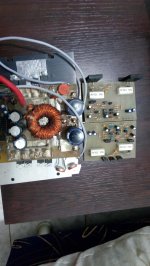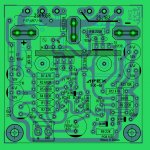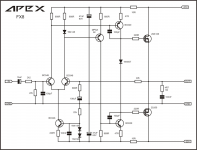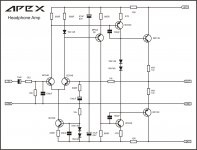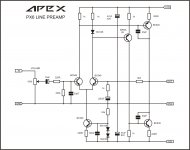Range of resistors given by AndrewT covers practical range of gain values for modern power amplifiers: 25dB-35dB. Anything above 35dB is probably too loud and below 25dB may lead to instability (in voltage feedback amplifiers) because of increased frequency range.
Replace 680R with 330R or add another 680R in parallel with exsisting.
Thanks, this worked - now the 330ohm is actually a little louder than the Dx. I may play around with it some more but see that the gain is easily adjusted.
Thanks, this worked - now the 330ohm is actually a little louder than the Dx. I may play around with it some more but see that the gain is easily adjusted.
Any change you observe with regard to SQ, bass v/s mid v/s treble?
reg
prasi
is+/-42vdc rails at 8 ohms safe? how much wattage it will produce?
Pl check the packages that you are using for 2SJ and 2SK.
OK, now i see, you have mounted from bottom.


Last edited:
Mr. Miles,
What is the best pre-amp to pair with FX-8? I was thinking Apex Shunt reg+ Tidu+ FX-8. Will it be good?
reg
Prasi
What is the best pre-amp to pair with FX-8? I was thinking Apex Shunt reg+ Tidu+ FX-8. Will it be good?
reg
Prasi
sir APEX , how work protect of AX14P ?
AX14P has over current protection, DC protection, turn on delay and somewhat accelerated turn off.
is+/-42vdc rails at 8 ohms safe? how much wattage it will produce?
With +/-42vdc you can't use BD139 and BD140 devices in VAS.
You can expect about 80W.
Mr. Miles,
What is the best pre-amp to pair with FX-8? I was thinking Apex Shunt reg+ Tidu+ FX-8. Will it be good?
reg
Prasi
Use LinearPre with OPA2134
Any change you observe with regard to SQ, bass v/s mid v/s treble?
reg
prasi
I'm going to listen for a few days and then give you impressions. Will try to build second unit for stereo as well. The FX8 sounds more dynamic on first impression with the higher gain. I may switch to a slightly lower gain with 470k which is between 330 and 680k.
The FX8 sounds more dynamic on first impression with the higher gain.
ANY amp actually. There is a minimum dynamic where below this, the amp will be boring or not musical. You want this minimum (or slightly above it), because too much dynamic will mean higher distortion (from feedback perspective)...
Then you can choose the value of the feedback resistance. The lower the resistance, the amp starts to behave like current feedback amp, stability needs attention and so with TR matching to avoid high DC offset at output, but I prefer lower feedback resistor... and the feedback capacitor needs to be adjusted (bigger) to maintain the same RC (or LF cutoff).
Hopefully your are just mistyping. You mean 470R right?
Duh... thanks. 🙂
470R or ohms not kohms
ANY amp actually. There is a minimum dynamic where below this, the amp will be boring or not musical. You want this minimum (or slightly above it), because too much dynamic will mean higher distortion (from feedback perspective)...
Then you can choose the value of the feedback resistance. The lower the resistance, the amp starts to behave like current feedback amp, stability needs attention and so with TR matching to avoid high DC offset at output, but I prefer lower feedback resistor... and the feedback capacitor needs to be adjusted (bigger) to maintain the same RC (or LF cutoff).
I left the feedback resistor alone (20kohm in my case vs the 22k specified because I did not have any 22k's). I changed the 680ohm as suggested by Apex to 330. This is not the feedback resistor (don't what you call it?).
I left the feedback resistor alone (20kohm in my case vs the 22k specified because I did not have any 22k's). I changed the 680ohm as suggested by Apex to 330. This is not the feedback resistor (don't what you call it?).
You can increase gain by increasing the series FB resistor (22k) or by lowering the shunt FB resistor (680). Lowering the shunt resistor is better. My preference is to lower both 22k and 680 (That's also what you did with 20k/330).
But 20k/330=61x is too high. Distortion will be high at high volume.
FX8 board as Headphone Amp?
I don't have the exact FX8 schematic with the Zener diode and bias adjust pot, but the basic FX8 schematic seems very similar to the (PX6 pre-amp) and Headphone Amp. So similar that use of the very compact 50mm x 50mm PCB's that I already have with a substitution of the output lateral FETs with a BD139/140 and addition of emitter resistors and the base resistors would turn the FX8 board to a headphone board? For Preamp, just leave off the OPS.
Here are the three side by side (or on top of one another).
FX8:
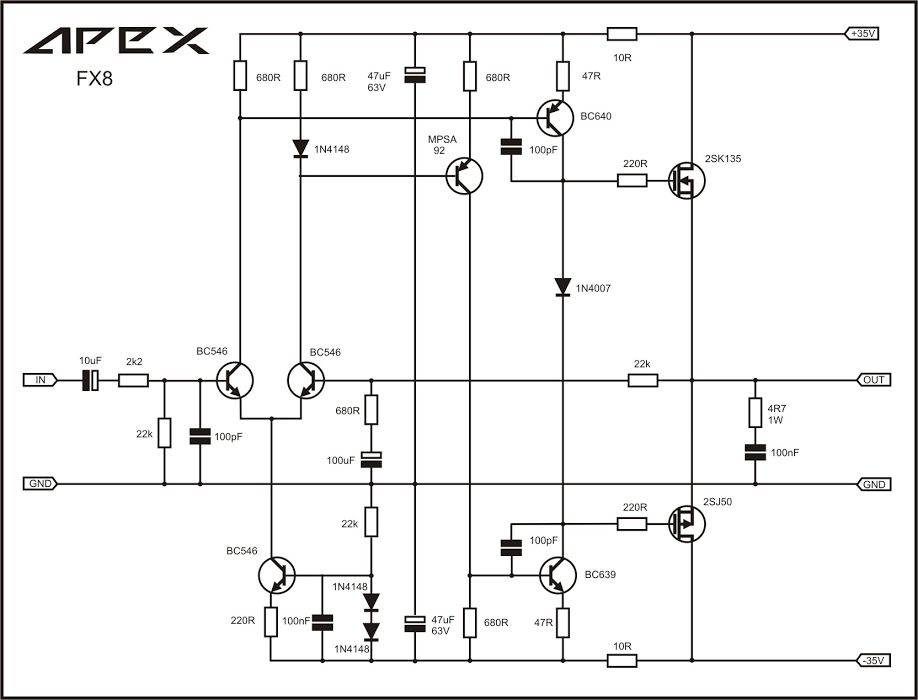
Headphone Amp:
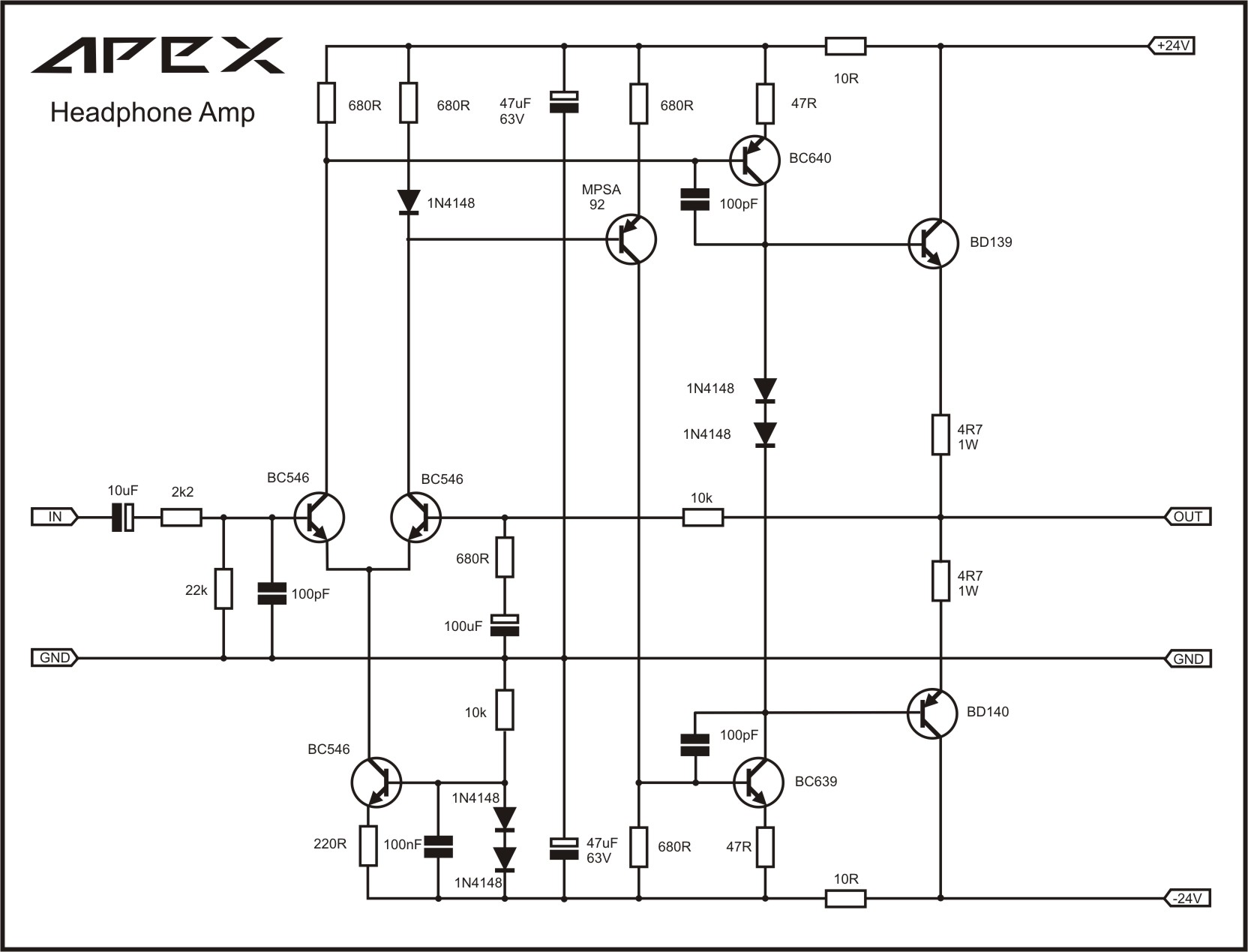
PX6 Preamp:
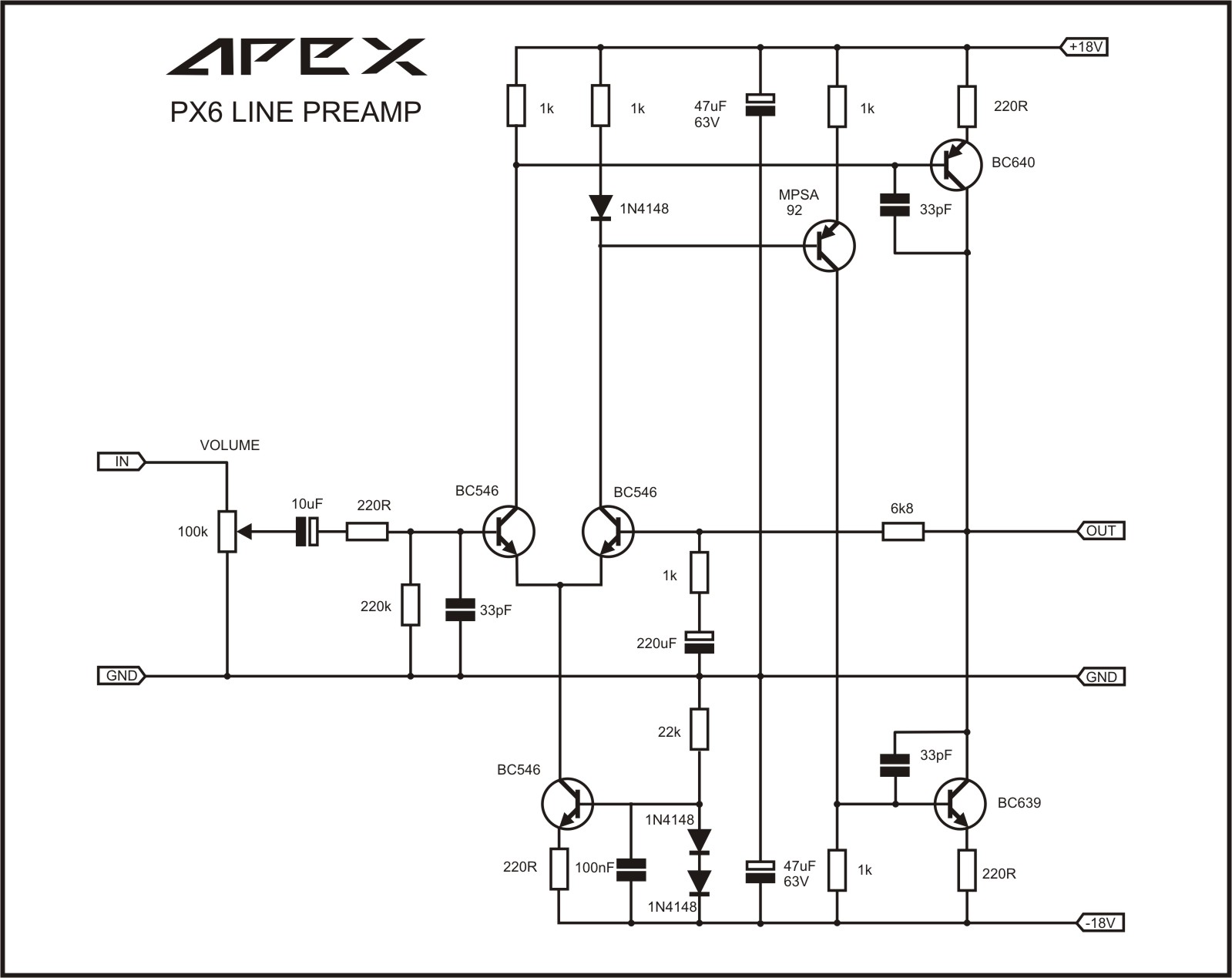
I don't have the exact FX8 schematic with the Zener diode and bias adjust pot, but the basic FX8 schematic seems very similar to the (PX6 pre-amp) and Headphone Amp. So similar that use of the very compact 50mm x 50mm PCB's that I already have with a substitution of the output lateral FETs with a BD139/140 and addition of emitter resistors and the base resistors would turn the FX8 board to a headphone board? For Preamp, just leave off the OPS.
Here are the three side by side (or on top of one another).
FX8:

Headphone Amp:

PX6 Preamp:

Attachments
Last edited:
You can increase gain by increasing the series FB resistor (22k) or by lowering the shunt FB resistor (680). Lowering the shunt resistor is better. My preference is to lower both 22k and 680 (That's also what you did with 20k/330).
But 20k/330=61x is too high. Distortion will be high at high volume.
I agree 61x is too high. Meh... maybe go back to 30.5x with a 10k on Fb and 330R on shunt?
I agree 61x is too high. Meh... maybe go back to 30.5x with a 10k on Fb and 330R on shunt?
680R parallel with 5k6 = 33x gain.
680R parallel with 4k7 = 33.5x gain.
680R parallel with 3k9 = 34.5x gain.
680R parallel with 3k3 = 35.5x gain.
I agree 61x is too high. Meh... maybe go back to 30.5x with a 10k on Fb and 330R on shunt?
With 10k series resistance we usually start to see stability problem (and needs compensation caps here and there..). I think it's okay with 36x or 40x as shown below:
20k/680=29x
20k/620=32x (original gain value)
20k/560=36x
20k/500=40x
20k/470=43x
- Home
- Amplifiers
- Solid State
- 100W Ultimate Fidelity Amplifier
